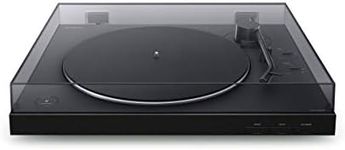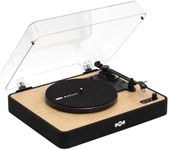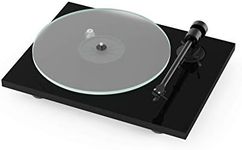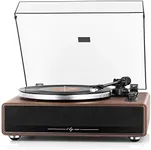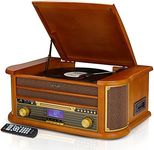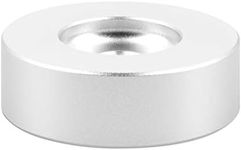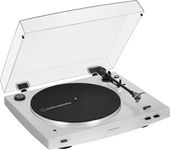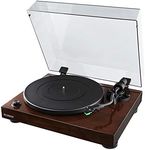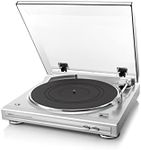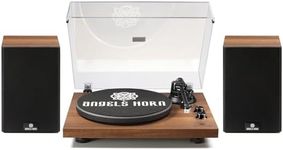Buying Guide for the Best Vinyl Players
Choosing the right vinyl player can greatly enhance your music listening experience. Vinyl players, also known as turntables, come in various designs and with different features that can affect sound quality, ease of use, and overall enjoyment. When selecting a vinyl player, consider what aspects are most important to you, such as sound quality, portability, or ease of setup. Understanding the key specifications will help you make an informed decision that suits your listening preferences and lifestyle.Drive TypeThe drive type of a vinyl player refers to how the platter is powered. There are two main types: belt drive and direct drive. Belt drive turntables use an elastic belt to spin the platter, which can reduce motor noise and vibration, making them ideal for audiophiles seeking high sound quality. Direct drive turntables have the motor directly connected to the platter, offering quicker start-up times and more consistent speed, which is preferred by DJs for scratching and mixing. If you prioritize sound quality for home listening, a belt drive might be best. If you plan to use the turntable for DJing or need quick start-up, consider a direct drive.
Cartridge TypeThe cartridge is the component that holds the needle (stylus) and converts the grooves on the record into an audio signal. There are two main types: moving magnet (MM) and moving coil (MC). MM cartridges are more common, easier to replace, and generally more affordable, making them suitable for most users. MC cartridges can offer superior sound quality but are typically more expensive and require a compatible phono preamp. If you're new to vinyl or want a straightforward setup, an MM cartridge is a good choice. If you're an audiophile seeking the best sound quality, consider an MC cartridge.
Speed SettingsVinyl records come in different sizes and speeds, typically 33 1/3 RPM (revolutions per minute) for LPs and 45 RPM for singles. Some older records may require 78 RPM. A good vinyl player should support at least 33 1/3 and 45 RPM. If you have a collection of older records, you might need a player that also supports 78 RPM. Consider the types of records you own or plan to buy when choosing a player with the appropriate speed settings.
Built-in PreampA preamp boosts the audio signal from the turntable to a level that can be played through speakers. Some vinyl players come with a built-in preamp, which simplifies the setup process and allows you to connect directly to powered speakers or an amplifier. If your audio system doesn't have a phono input, a built-in preamp can be very convenient. However, if you already have a high-quality external preamp or plan to upgrade your audio system, you might prefer a turntable without a built-in preamp for more flexibility.
Manual vs. Automatic OperationVinyl players can be manual, semi-automatic, or fully automatic. Manual turntables require you to lift the tonearm and place it on the record, which can offer a more hands-on experience and is often preferred by purists. Semi-automatic players will automatically lift the tonearm at the end of the record. Fully automatic players handle both the start and end of playback, which is convenient for those who prefer ease of use. Consider how much involvement you want in the playback process when choosing between these options.
Build Quality and MaterialsThe build quality and materials of a vinyl player can affect both its durability and sound quality. Heavier turntables with solid plinths (bases) can reduce vibrations and improve sound quality. Materials like aluminum or acrylic for the platter can also enhance performance. If you plan to use your turntable frequently or want the best sound quality, look for models with high-quality materials and construction. If portability or space is a concern, you might opt for a lighter, more compact model.
